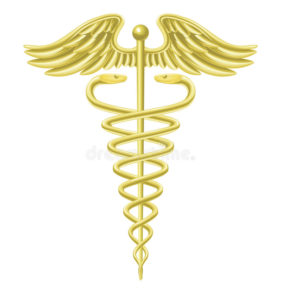Table of contents
You may have heard about what the symbol of psychoanalysis is, and most certainly you already know that every science, art, method or technique has its own very peculiar logo.
This vision of creating emblems and logos goes way back to the heraldry of the European noble families that had their logos.
Understanding which symbol of psychoanalysis
Many professions have only come up with one logo like the undergraduate and graduate degrees and specializations (masters, doctorates and phd) worldwide and have created their symbols next to the logos of the universities and colleges that also have their logos and even many of them encourage academics to appreciate the logo and use it to demonstrate to others the course they are taking on a campusuniversity.
It is common to embroider the logo, use a t-shirt or even a folder and didactic material stamped with the course symbol. But, in the end, what is the Psychoanalysis logo? We know beforehand that Sigmund Freud (1856-1939) was from the medical school, in which he received his bachelor's degree; however, we have no evidence that he was concerned with this question of a logo or symbol for Psychoanalysis.
Historical records tell us that the International Psychoanalytical Association, 'IPA' (International Psychoanalytical Association), which currently includes thousands of psychoanalysts around the world and was founded in 1910, based on a proposal by Sandor Ferenczi (1873-1933), a Hungarian psychoanalyst and one of Freud's closest collaborators, elected a logo as shown in figure 1.

Figure 1 - IPA Lotto - Source: www.google.com
About the figure and which symbol of psychoanalysis
From 1920 on, several attempts were made to create an 'international logo' for Psychoanalysis. All the proposals had no consensus and did not prosper.
Operators of Psychoanalysis then began to opt for an adapted logo, based on the medical logo. Others used the couch as a representation of Psychoanalysis.
The medicine logo adapted with a stick and the other with the torch were more likely to be used. The logo using the torch started to spread more widely, but the logo using the stick was also an option, as shown in figure 2.

Figure 2 - Psychoanalysis logo with the stick
Hermes and which symbol of psychoanalysis
The logo with the torch or torch has appeared in several publications, and researchers have searched for the meaning of the two snakes; what they say is that one is the knowledge and the other is the non-knowledge in a visual dialectic clash, and the torch would be the revelation of knowledge. Therefore, the snake represents the link between the known world and the unknown world (underground, unconscious).
The controversy that arose was with regard to the 'caduceus' of Hermes, which was the use of the staff of Asclepius, the Greek deity of medicine. And there was this situation of representing Psychoanalysis both with the stick or torch lit. It is worth pointing out that the central idea was to bring light to the unconscious by promoting an evolution of knowledge. Others sought the perception of a discovery, using the 'couch' as a symbol.
Therefore, the background symbol has always been that of medicine where Psychoanalysis had its branch or seed or genesis (origin). The divergence would be between the use of the stick or the use of the lit torch (torch) according to figure 3. Some analysts, for divergences and disgusted with the lack of standard, started using the logo with the torch extinguished.

I want information to enroll in the Psychoanalysis Course .
See_also: Wilhelm Wundt: life work and conceptsFigure 3 - Logo psychoanalysis with torch lit
Changes to understand which symbol of psychoanalysis
It is worth noting that the caduceus took the known shape when it was thrown by Hermes, the Greek deity, who in Rome would later be called Mercury, between two struggling serpents and intertwined in the shaft as a friendly attitude between different forces, which represents balance and infinity.
The caduceus is the representation of two serpents coiled on a staff ending with two wings and has also been described as the symbolism of Hermes transposed to the god Mercury of Rome, where the caduceus signified morality and right conduct. The color of the symbol was green.
However, in the 20th century, the US military decided to replace the 'staff of Asclepius' with the 'caduceus of Hermes' as the symbol of Medicine. They also proposed changing the traditional color of the profession from 'green' to 'brown'.
Read Also: Psychology of Education and LearningThe symbol of original medicine
Another important fact, refers to the fact that the symbol of the original medicine is a single snake, and wrapped around the staff of Asclepius (or Asclepius), considered the god of medicine, of healing, where the snake circulates freely in his temple because it is considered beneficial to patients. Then they added two snakes, aiming to represent a dialectic of knowing and not knowing in search of the revelation or the cause of the pathology.
In Brazil, the issue also had its contours and unfoldings where they initially used the IPA symbol; many analysts chose to start designing their logos.
The snake continued in the Brazilian imaginary as a symbol associated, in the positive aspect, with wisdom, ascension, and spiritual strength, and in the negative aspect, related to betrayal and falsehood, generating fear and dread, and admiration and respect, as shown in figure 4.


Figure 4 - Difference between the logos for medicine and psychoanalysis
The National Order of Psychoanalysts on which symbol of psychoanalysis
The National Order of Psychoanalysts in Brazil, which was founded in 2009, tried to create a logo to be used by professionals in the field, which many, especially from the Lacanian line, flatly rejected and did not accept. The ONP used the logo with the torch, as shown in figure 5.
See_also: Chronic fear of snakes: causes and treatment of this phobia
Figure 5 - Proposed ONP logo
I want information to enroll in the Psychoanalysis Course .
The 'couch' used by Freud, from 1895 on, which was a gift he got from one of his former patients (analyzed) started to be used as a logo of Psychoanalysis in a modern and post-modern way, as shown in figure 6.

Figure 6 - Use of the symbology of the couch in modern and postmodern Psychoanalysis
There is not yet a universal symbol agreed upon and signed by the IPA that is of consensual use, and attempts to build a class body have been refuted as something that is mandatory.
Conclusion
The thesis is that the exercise is constitutional and free, but with certification from centers, institutes, and associations with social reputation, and that the Psychoanalysis operator has a training based on the tripod of the study of theory, didactic analysis, and supervision by more experienced analysts, and it is recommended that he be connected to a reputable, serious, and honest training center.
As to the question of the adoption of the logo (emblem or symbol), it is up to the operator of Psychoanalysis linked to his school of thought to choose whether or not he wants it to be a stick or torch or something close or not to medicine, psychology or psychiatry. The best solution is a matter for the Psychoanalytic operator, as long as he is able to exercise his attributions.
This article was written by Edson Fernando Lima de Oliveira. Graduated with a degree in History and Philosophy. PG in Psychoanalysis. Currently doing PG in Clinical Pharmacy and Pharmacological Prescription; academic and researcher of Clinical Psychoanalysis and Clinical Philosophy. Contact via e-mail: [email protected].
